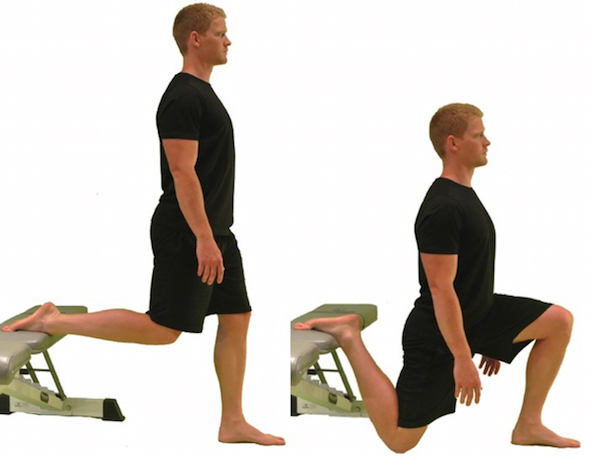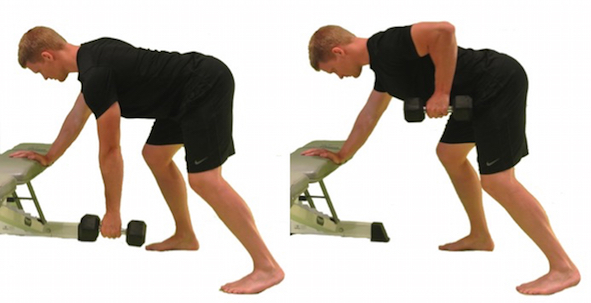Although single-arm and single-leg (unilateral) exercises tend to be neglected, they’re just as effective for improving strength….and in some cases, superior for building muscle.
A research study from 2012 in the Journal of Strength and Conditioning Research discovered that the Back Foot Elevated Lunge had a slightly higher testosterone response than the traditional bilateral Back Squat.
Whether this makes it ‘better overall’ is debatable, but some trainers and coaches prefer the lunge because of the increased ability to load the quads.
One things that’s clear, is that performing 1-leg or 1-arm movements improves the strength in 2-leg or 2-arm movements, and visa versa. Meaning, dedicating some time to unilateral work isn’t going to harm your progress.
In many cases, unilateral exercises feel more natural because they permit a better range of motion. And depending on your training goal, can supply greater core activation than their 2-leg or 2-arm counterparts.
The only downside, is that they’re less efficient. So looking to hold yourself to 1 or 2 movements per workout is encouraged – to ensure your workouts are running too long.
Programming them after the big bilateral movements is also recommended, as performing an all-encompassing exercise like a squat, deadlift, or overhead press too late in the workout can harm performance.
“It is recommended that strength programs sequence exercises to optimize the preservation of exercise intensity (large before small muscle group exercises, multiple-joint exercises before single-joint exercises, and higher-intensity before lower-intensity exercises).” American College of Sports Medicine, 2009
Other than the lunge and 1-arm row pictured above, you’ll want to incorporate some 1-arm pressing and single-leg posterior chain (glutes, hamstrings, low back) work. Here are 2 of my favorite introductory options:
Stay Lean!
Coach Mike
RELATED ARTICLES:
Is There An Optimal Rep Range?
Why Protein After Resistance Training?


